Years of service 1809–1858 | Name Matthew Perry Siblings Oliver Hazard Perry | |
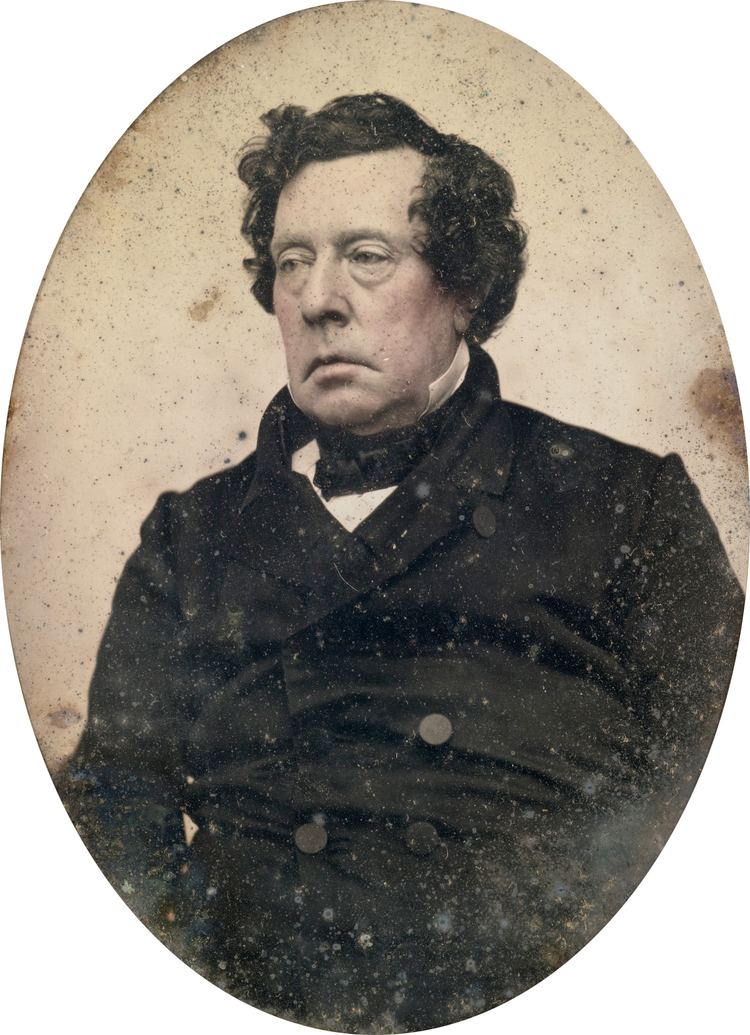 | ||
Birth name Matthew Calbraith Perry Born April 10, 1794Newport, Rhode Island, U.S. ( 1794-04-10 ) Allegiance United States of America Commands held USS SharkAfrica SquadronUSS FultonNew York Navy YardUSS MississippiMosquito Fleet Battles/wars Little Belt AffairWar of 1812USS President vs HMS BelvideraSecond Barbary WarSuppression of the Slave TradeBattle of Little BerebyOpening of JapanMexican–American WarBattle of FrontieraFirst Battle of TabascoTampico ExpeditionSiege of VeracruzFirst Battle of TuxpanSecond Battle of TuxpanThird Battle of TuxpanSecond Battle of Tabasco Spouse Jane Slidell Perry (m. 1814) Parents Christopher Raymond Perry, Sarah Wallace Perry Books Narrative of the Expedition of an American Squadron to the China Seas and Japan Similar People Oliver Hazard Perry, Matthew Perry, Millard Fill, Liliuokalani, Franklin Pierce | ||
Commodore Matthew C. Perry - The Man Who Unlocked Japan
Matthew Calbraith Perry (April 10, 1794 – March 4, 1858) was a Commodore of the United States Navy and commanded a number of ships. He served in several wars, most notably in the War of 1812 and the Mexican–American War (1846-48). He played a leading role in the opening of Japan to the West with the Convention of Kanagawa in 1854.
Contents
- Commodore Matthew C Perry The Man Who Unlocked Japan
- Matthew c perry
- Early life and naval career
- Opening of Key West
- Father of the Steam Navy
- Promotion to Commodore
- MexicanAmerican War
- The Perry Expedition Opening of Japan 18521854
- First visit 1853
- Second visit 1854
- Return to the United States 1855
- Last years
- Family
- Perrys flag and legacy
- Memorials
- Fictional depictions
- References

Perry took an interest in the education of naval officers and assisted in the development of an apprentice system that helped establish the curriculum at the United States Naval Academy. With the advent of the steam engine, he became a leading advocate of modernizing the US Navy and came to be considered The Father of the Steam Navy in the United States.

Matthew c perry
Early life and naval career
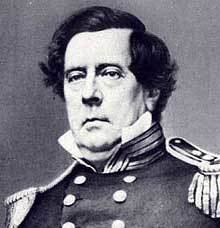
Matthew Perry was the son of Sarah Wallace (Alexander) and Navy Captain Christopher R. Perry and the younger brother of Oliver Hazard Perry. Matthew Perry received a midshipman's warrant in the Navy in 1809, and was initially assigned to the USS Revenge, under the command of his elder brother.
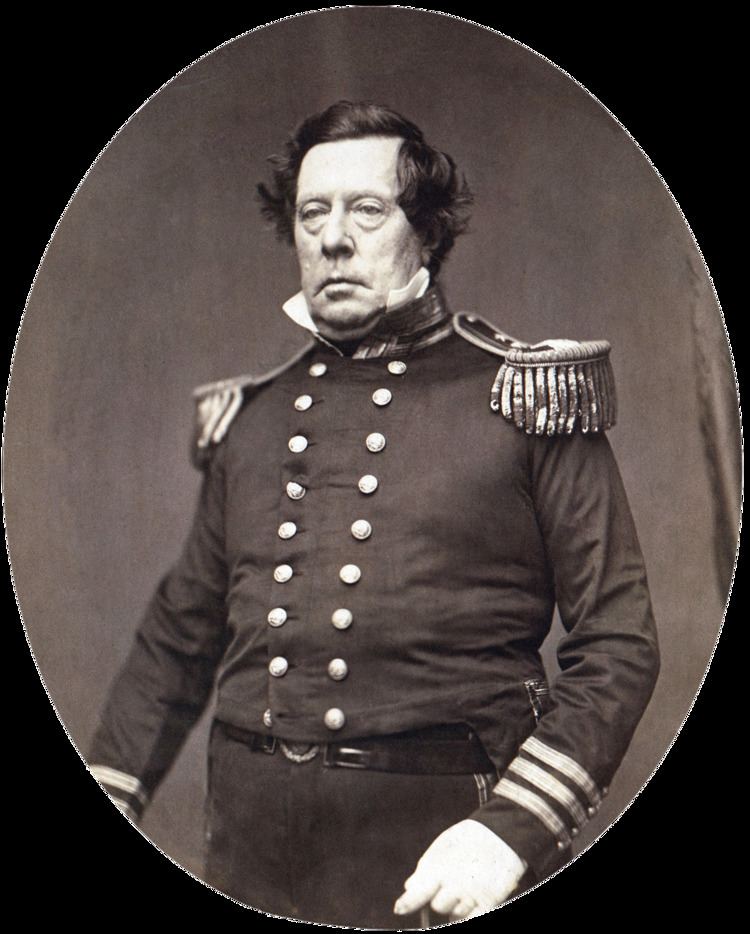
Perry's early career saw him assigned to several ships, including the USS President, where he served as an aide to Commodore John Rodgers. The President was in a victorious engagement over a British vessel, HMS Little Belt, shortly before the War of 1812 was officially declared. Perry continued aboard President during the War of 1812 and was present at the engagement with HMS Belvidera. Rodgers fired the first shot of the war at the Belvidera. A later shot resulted in a cannon bursting, killing several men and wounding Rodgers, Perry and others. Perry transferred to the USS United States, commanded by Stephen Decatur, and saw little fighting in the war afterwards, since the ship was trapped in port at New London, Connecticut.
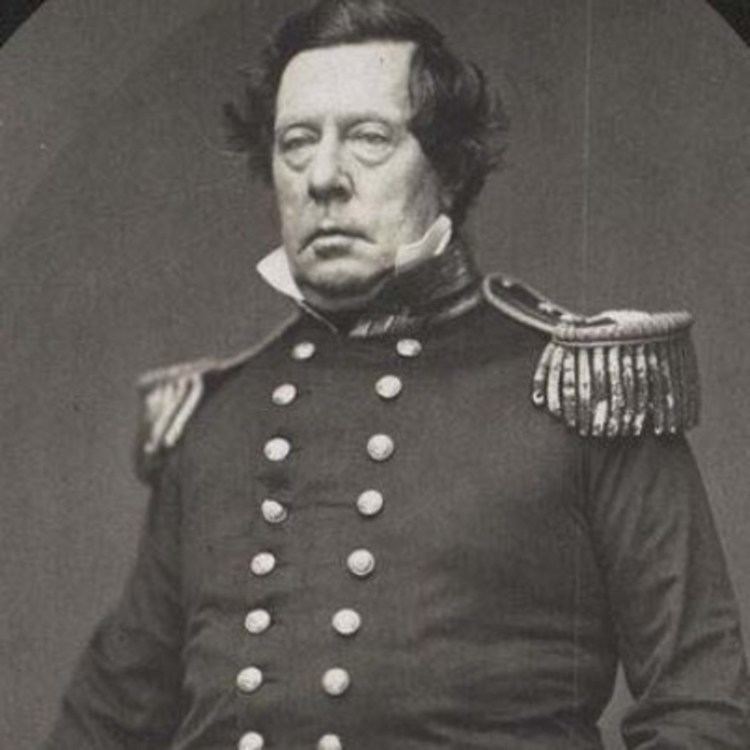
Following the signing of the Treaty of Ghent, which ended the war, Perry served on various vessels in the Mediterranean. Perry served under Commodore William Bainbridge during the Second Barbary War. He then served in African waters aboard USS Cyane during its patrol off Liberia from 1819–1820. After that cruise, Perry was sent to suppress piracy and the slave trade in the West Indies. Later during this period, while in port in Russia, Perry was offered a commission in the Imperial Russian Navy, which he declined.
Opening of Key West
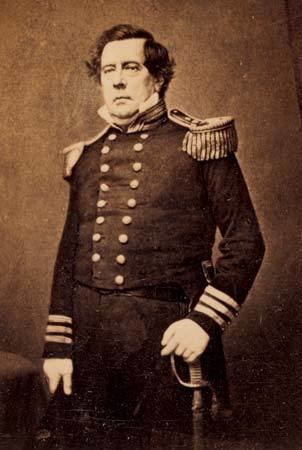
Perry commanded the USS Shark, a schooner with 12 guns, in 1821–1825. In 1763, when Britain possessed Florida, the Spanish contended that the Florida Keys were part of Cuba and North Havana. Certain elements within the United States felt that Key West (which was then named Cayo Hueso, meaning "Bone Key") could potentially be the "Gibraltar of the West" because it guarded the northern edge of the 90 miles (140 km) wide Straits of Florida—the deep water route between the Atlantic and the Gulf of Mexico.
In 1815 the Spanish governor in Havana deeded the island of Key West to Juan Pablo Salas of Saint Augustine. After Florida was transferred to the United States, Salas sold Key West to American businessman John W. Simonton for $2,000 in 1821. Simonton lobbied the U.S. Government to establish a naval base on Key West both to take advantage of its strategic location and to bring law and order to the area.
On March 25, 1822, Perry sailed Shark to Key West and planted the U.S. flag, physically claiming the Keys as United States territory.
Perry renamed Cayo Hueso "Thompson's Island" for the Secretary of the Navy Smith Thompson and the harbor "Port Rodgers" for the president of the Board of Navy Commissioners. Neither name stuck.
From 1826 to 1827 Perry acted as fleet captain for Commodore Rodgers. Perry returned to Charleston, South Carolina for shore duty in 1828, and in 1830 took command of a sloop-of-war, the USS Concord. He spent the years 1833–1837 as second officer of the New York Navy Yard (later the Brooklyn Navy Yard), gaining promotion to captain at the end of this tour.
He was a member of the Masons.
Father of the Steam Navy
Perry had an ardent interest and saw the need for the naval education, supporting an apprentice system to train new seamen, and helped establish the curriculum for the United States Naval Academy. He was a vocal proponent of modernizing the Navy. Once promoted to captain, he oversaw construction of the Navy's second steam frigate USS Fulton (1837), which he commanded after its completion. He was called "The Father of the Steam Navy", and he organized America's first corps of naval engineers, and conducted the first U.S. naval gunnery school while commanding Fulton in 1839–1841 off Sandy Hook on the coast of New Jersey.
Promotion to Commodore
Perry received the title of Commodore in June 1840, when the Secretary of the Navy appointed him commandant of New York Navy Yard. The United States Navy did not have ranks higher than captain until 1857, so the title of commodore carried considerable importance. Officially, an officer would revert to his permanent rank after the squadron command assignment had ended, although in practice officers who received the title of commodore retained the title for life, and Perry was no exception.
During his tenure in Brooklyn, he lived in Quarters A in Vinegar Hill, a building which still stands today. In 1843, Perry took command of the African Squadron, whose duty was to interdict the slave trade under the Webster-Ashburton Treaty, and continued in this endeavor through 1844.
Mexican–American War
In 1845, Commodore David Conner's length of service in command of the Home Squadron had come to an end. However, the coming of the Mexican–American War persuaded the authorities not to change commanders in the face of the war. Perry, who would eventually succeed Conner, was made second-in-command and captained the USS Mississippi. Perry captured the Mexican city of Frontera, demonstrated against Tabasco and took part in the capture of Tampico (November 14, 1846). He had to return to Norfolk, Virginia to make repairs and was still there when the amphibious landings at Veracruz took place. His return to the U.S. gave his superiors the chance to finally give him orders to succeed Commodore Conner in command of the Home Squadron. Perry returned to the fleet during the siege of Veracruz and his ship supported the siege from the sea. After the fall of Veracruz, Winfield Scott moved inland and Perry moved against the remaining Mexican port cities. Perry assembled the Mosquito Fleet and captured Tuxpan in April, 1847. In July 1847 he attacked Tabasco personally, leading a 1,173-man landing force ashore and attacking the city of San Juan Bautista (Villahermosa today) from land.
The Perry Expedition: Opening of Japan, 1852–1854
In 1852, Perry was assigned a mission by American President Millard Fillmore to force the opening of Japanese ports to American trade, through the use of gunboat diplomacy if necessary. The growing commerce between America and China, the presence of American whalers in waters offshore Japan, and the increasing monopolization of potential coaling stations by the British and French in Asia were all contributing factors. The Americans were also driven by concepts of manifest destiny and the desire to impose western civilization on what they perceived as backward Asian nations. The Japanese were forewarned by the Dutch of Perry’s voyage, but were unwilling to change their 220-year-old policy of national seclusion. There was considerable internal debate in Japan on how best to meet this potential threat to Japan’s economic and political sovereignty.
On November 24, 1852, Perry embarked from Norfolk, Virginia for Japan, in command of the East India Squadron in pursuit of a Japanese trade treaty. He chose the paddle-wheeled steam frigate Mississippi as his flagship, and made port calls at Madeira (December 11–15), St Helena (January 10–11), Cape Town (January 24 – February 3), Mauritius (February 18–28), Ceylon (March 10–15), Singapore (March 25–29) and Macao and Hong Kong (April 7–28), where he met with American-born Sinologist Samuel Wells Williams, who provided Chinese language translations of his official letters, and where he rendezvoused with Plymouth. He continued to Shanghai (May 4–17), where he met with the Dutch-born American diplomat, Anton L. C. Portman, who translated his official letters into the Dutch language, and where he rendezvoused with Susquehanna.
Perry then switched his flag to Susquehanna and made call at Naha on Great Lewchew Island (now Okinawa) from May 17–26. Ignoring the claims of Satsuma Domain to the islands, he demanded an audience with the Ryukyuan King Shō Tai at Shuri Castle and secured promises that the Kingdom would be open to trade with the United States. Continuing on to the Ogasawara islands in mid-June, Perry met with the local inhabitants and purchased a plot of land.
First visit, 1853
Perry finally reached Uraga at the entrance to Edo Bay in Japan on July 8, 1853. His actions at this crucial juncture were informed by a careful study of Japan's previous contacts with Western ships and what he knew about the Japanese hierarchical culture. As he arrived, Perry ordered his ships to steam past Japanese lines towards the capital of Edo, and turn their guns towards the town of Uraga. Perry refused Japanese demands to leave, or to proceed to Nagasaki, the only Japanese port open to foreigners.
Perry attempted to intimidate the Japanese by presenting them a white flag and a letter which told them that in case they chose to fight, the Americans would destroy them. He also fired blank shots from his 73 cannons, which he claimed was in celebration of the American Independence Day. Perry's ships were equipped with new Paixhans shell guns, cannons capable of wreaking great explosive destruction with every shell. He also ordered his ship boats to commence survey operations of the coastline and surrounding waters over the objections of local officials.
In the meantime, the Japanese government was paralyzed due to the incapacitation by illness of Shogun Tokugawa Ieyoshi and by political indecision on how to handle the unprecedented threat to the nation’s capital. On July 11, Rōjū Abe Masahiro temporized, deciding that simply accepting a letter from the Americans would not constitute a violation of Japanese sovereignty. The decision was conveyed to Uraga, and Perry was asked to move his fleet slightly southwest to the beach at Kurihama (in modern-day Yokosuka), where he was allowed to land on July 14, 1853. After presenting the letter to attending delegates, Perry departed for Hong Kong, promising to return the following year for the Japanese reply.
Second visit, 1854
On his way back to Japan, Perry anchored off of Keelung in Formosa, known today as Taiwan, for ten days. Perry and crewmembers landed on Formosa and investigated the potential of mining the coal deposits in that area. He emphasized in his reports that Formosa provided a convenient, mid-way trade location. Perry's reports noted that the island was very defensible and it could serve as a base for exploration in a similar way that Cuba had done for the Spanish in the Americas. Occupying Formosa could help the United States counter European monopolization of the major trade routes. The United States government failed to respond to Perry's proposal to claim sovereignty over Formosa.
Perry returned on 13 February 1854, after only half a year rather than the full year promised, and with ten ships and 1600 men. Both actions were calculated to put even more pressure onto the Japanese. After initial resistance, Perry was permitted to land at Kanagawa, near the site of present-day Yokohama on March 8, 1854, where, after negotiations lasting for around a month, the Convention of Kanagawa was signed on March 31, 1854. Perry signed as American plenipotentiary, and Hayashi Akira, also known by his title of Daigaku-no-kami signed for the Japanese side.
Perry departed, mistakenly believing the agreement had been made with imperial representatives, not understanding the true position of the Shogun, the de facto ruler of Japan. Perry then visited Hakodate on the northern island of Hokkaido and Shimoda, the two ports which the treaty stipulated would be opened to visits by American ships.
Return to the United States, 1855
When Perry returned to the United States in 1855, Congress voted to grant him a reward of $20,000 (US$ 514,000 in 2017) in appreciation of his work in Japan. He used part of this money to prepare and publish a report on the expedition in three volumes, titled Narrative of the Expedition of an American Squadron to the China Seas and Japan. He was also promoted to the grade of rear-admiral on the retired list (when his health began to fail) as a reward for his service in the Far East. Perry was known to have suffered severe arthritis that left him in frequent pain, and on occasion precluded him from his duties.
Last years
Perry spent his last years preparing for publication his account of the Japan expedition, announcing its completion on December 28, 1857. Two days later he was detached from his last post, an assignment to the Naval Efficiency Board. He died awaiting further orders on March 4, 1858, in New York City, of rheumatic fever that had spread to the heart, compounded by complications of gout and alcoholism.
Initially interred in a vault on the grounds of St. Mark's Church in-the-Bowery, in New York City, his remains were moved to the Island Cemetery in Newport, Rhode Island on March 21, 1866, along with those of his daughter, Anna, who died in 1839.
In 1873, an elaborate monument was placed by his widow over his grave in Newport.
Family
Commodore Perry was married to Jane Slidell Perry (1816–1864) and had ten children:
Perry's flag and legacy
A replica of Perry's US flag is on display on board the USS Missouri (BB-63) memorial in Pearl Harbor, Hawaii, attached to the bulkhead just inboard of the Japanese surrender signing site on the starboard side of the ship. The original flag was brought from the U.S. Naval Academy Museum to Japan for the Japan surrender ceremony and was displayed on that occasion at the request of Douglas MacArthur, who was himself a blood-relative of Perry. Photographs of the signing ceremony show that this flag was displayed properly as all flags on vessels (known as ensigns) on the starboard side are, with the stars in the upper right corner. The cloth of the historic flag was so fragile that the conservator at the Museum directed that a protective backing be sewn on it. Today, the flag is preserved and on display at the Naval Academy Museum in Annapolis, Maryland.
The pattern for the Union canton on this flag is different from the standard 31-star flag then in use. Perry's flag had columns of five stars save the last column which had six stars. Perry's US flag was unique when it was first flown in Tokyo Bay in 1853–1854. The replica of this historic flag on board the USS Missouri memorial is also placed in the same location on the bulkhead of the veranda deck where it had been initially mounted on the morning of September 2, 1945 by Chief Carpenter Fred Miletich.
